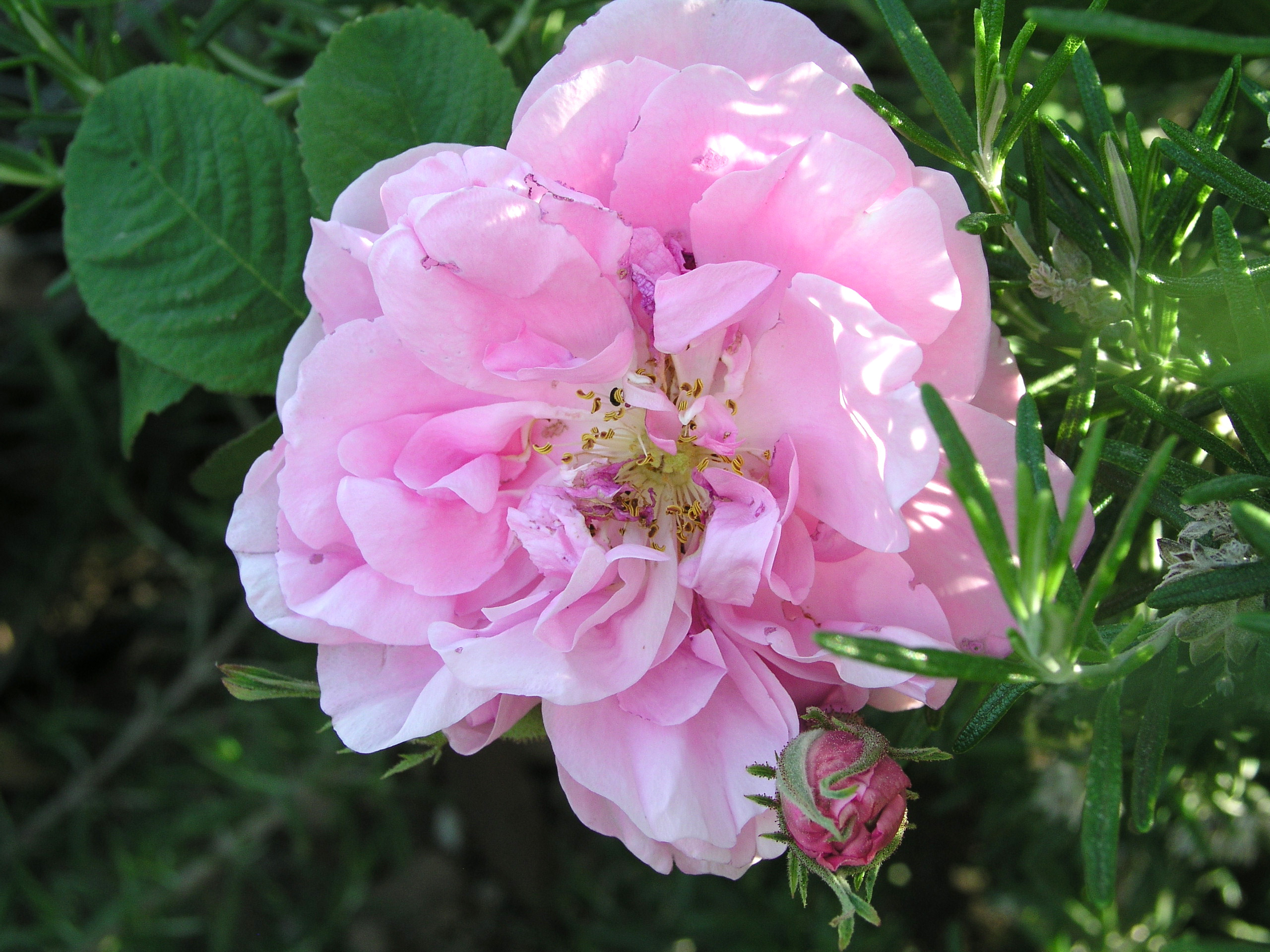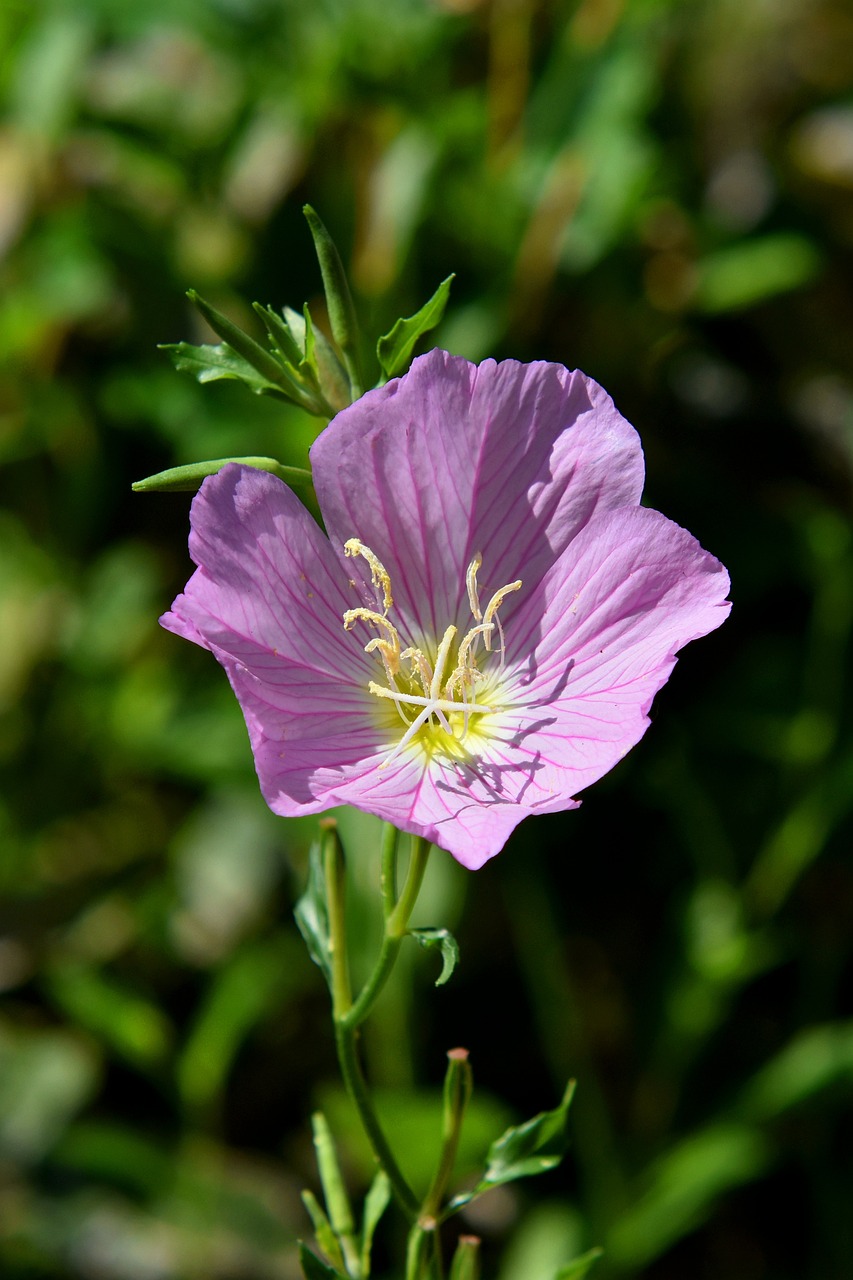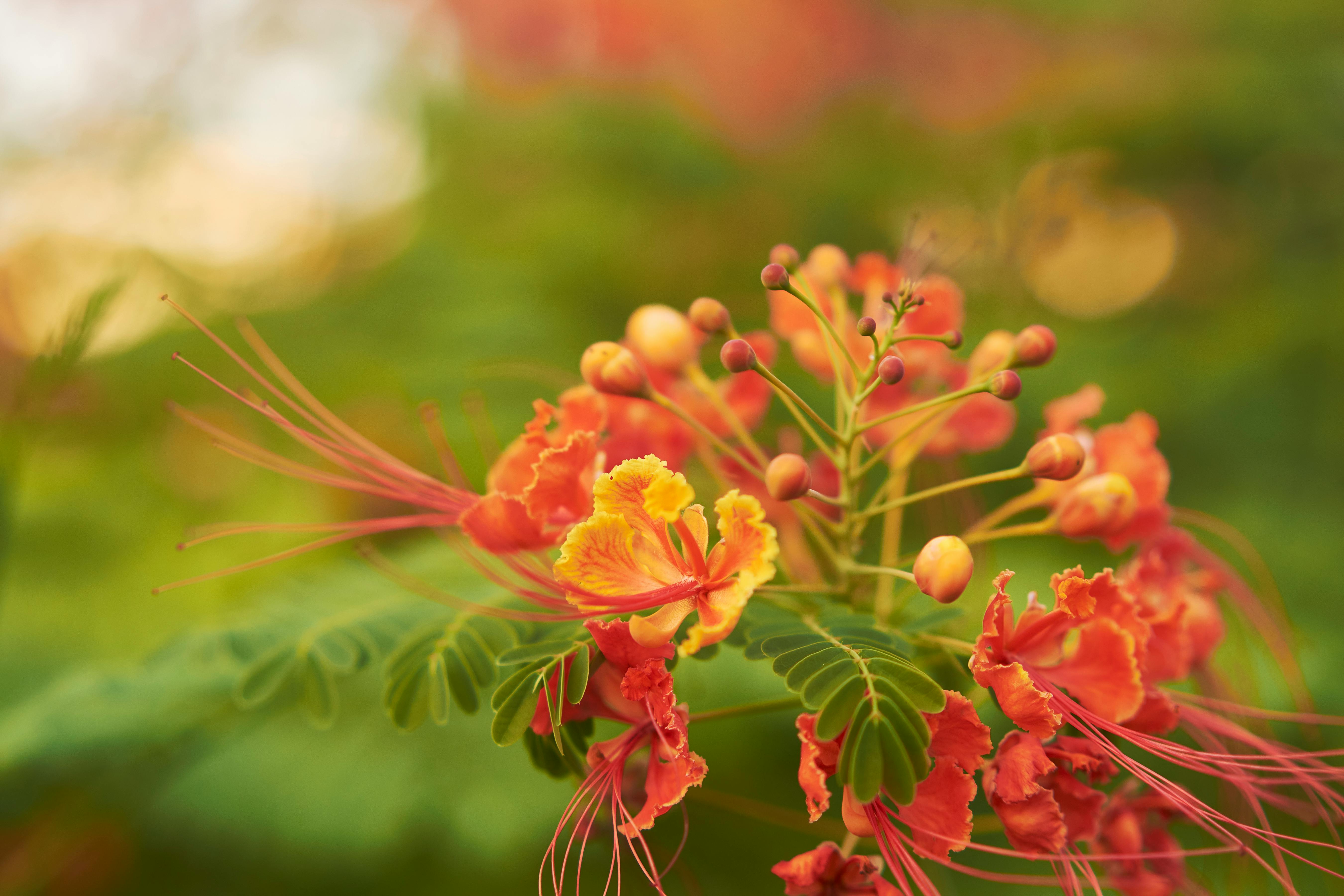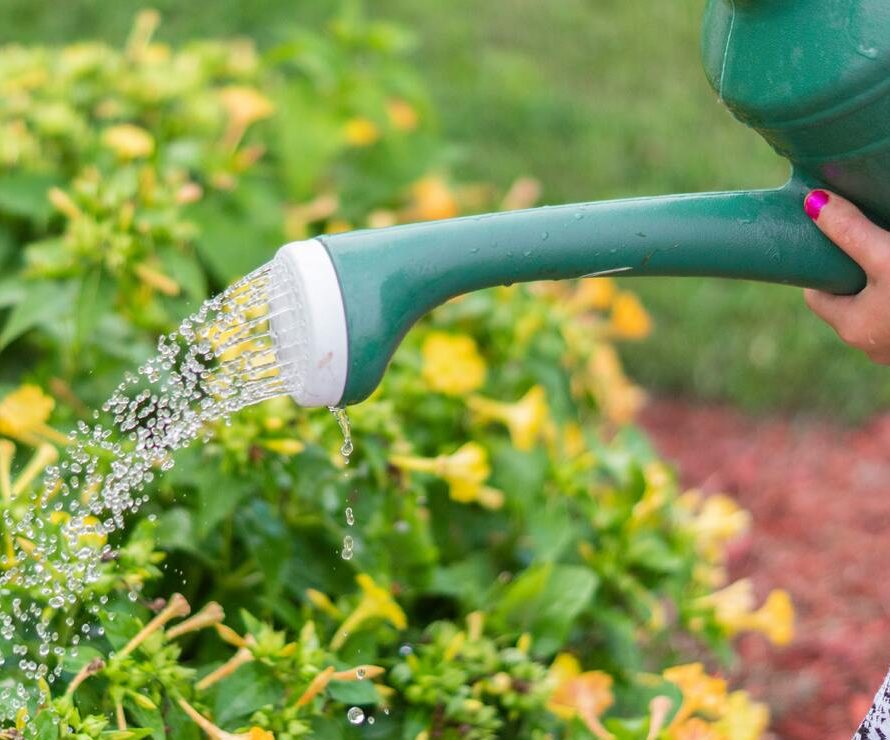Halfway through the year already and the gardens are looking very summery, although not quite dried out yet by the burning summer sun. After the spring season here with gentle flowers, along come the tropical trees and flowers to delight the gardeners amongst you.
The big trees like Bauhinias and ‘red buds’ are now in summer recess, but others are beginning to share their flowers with us. The last trees to flower in my garden were the jacarandas and they are now quite big, but do enhance the garden as the clusters of blue flowers toss gently in the breezes.
They may surprise us with another flowering later in the year. These trees tend to keep their foliage on into the early spring. I have only four trees but they do please me, but not my under-gardener, who dislikes the litter from them.
If you want to see them en masse than you would have to travel to the southern hemisphere to Pretoria in South Africa or New South Wales in Australia.
One of my smaller favourites is Caesalpinia gilliesii, which grows to only about 3-4 metres, so can be accommodated in a small garden by keeping it pruned back in the winter.
This sub-tropical tree delights me with the feather-like foliage and stunning flowers of bright yellow with long red stamens that wave about in any slight wind. The seeds germinate quickly but take a while to grow to a height that you can plant them in the garden.
Another favourite tree that is even shorter, is Leucophyllum frutescens, known in some parts as the Texas ranger. This small tree or bush, from Texas (no less), is very easy to look after and has the softest grey foliage.
Given a shower of rain or even a quick spray with a hose or watering can, the most wonderful pink flowers appear on the stem ends. Humidity can cause this to happen too. A non-invasive shrub, this a must for every garden.
Another tree, Polygala myrtifolia, is often described as a shrub and in flower for most of the year. However, it can grow to quite large proportions – side-ways as well as height-wise – so be warned.
Polygalas grow from seed easily and the current one in the garden was what is known as a chance seedling. One we grew from another small seedling eventually almost blocked the path from the gate to the door! However, it’s pretty flowers are a haven for bees and you will see and hear them as they flit from flower to flower.
You either love or hate Hibiscus rosa sinensis (literally ‘rose of China’). Over the years that I have lived in Cyprus this bush or hedge plant has caused me and others severe problems as mealy bugs love them too and are to be found under the leaves and stems during the summer months.

They are the very devil to get rid of. Squashing them with finger and thumb is the only sure way to deal with them. There are all sorts of hybrids around these days and these don’t seem to be affected as badly, but for a tremendous looking hedge you can’t beat the red ones!
Tecoma stans or ‘yellow bells’ is a useful tree from the West Indies and eastern coastal states of America and used extensively along the coastal roads here. The lovely bell-like flowers are a pretty sight to behold and some even flower twice, which is quite a bonus.
Of course, if you have a humid climate where you live, then you could introduce plumeria (frangipane), another large tree, but ensure that you have the space before you buy one. As with other trees, plumeria can have an irritating sap.
They are often grown around cemeteries in the East as they are associated with death. The flowers are used in Hindu and Buddhist rituals and sometimes in the Hawaiian Islands a girl may wear one over her ears, which suggests she is looking for partner. So, ladies, don’t get carried away on a hot, sultry tropical night!
Plumbago is a shrub that can grow quite tall, around 3 metres, if you let it but its heavenly blue or even white flowers delight all summer long. This South African bush benefits from a severe pruning after the last flowers die down in autumn, but that doesn’t stop it from throwing out underground roots and you may find another plant appearing a little distance away. Pruning back in the autumn to around 12cm will invigorate the plant and allow it to build up strength for another hot Cyprus summer.
The other way of propagating is by seeds. It produces seed capsules with a sticky coating, which adhere to the fur of any animal or the clothing of a human passing by and germinate quickly.
Roses are still to the fore and even as late as this my banksia rose never fails to delight me. I do envy those who can grow roses like the ‘Queen Elizabeth’ rose with its charming rose-pink flowers. This is classed as a hedging rose as it can grow quite tall.
Some gardeners I know can grow Rosa damascena, which has the most delightful perfume and to my surprise I have discovered that a damascena rose that I feared had died, has thrown up a new shoot, so I await its growth with much anticipation.
Other heavily perfumed flowers are appearing now. Honeysuckle and jasmines come to mind here and are always something to look forward to, even though they need some support in the form of archways or trellises to show them off to perfection.
There are several types of jasmines available here. Jasmine mesnyi, a spring flowering jasmine is the first to delight us each year with its trailing stems covered with pretty yellow flowers. You can safely cut back this jasmine after flowering.
At this time of year Jasmine officinale, which used to be called Jasmine grandiflorum andis known hereas the ‘common jasmine’, is anythingbut! It also goes by the name of ‘summer jasmine’, ‘poet’s jasmine’, ‘true jasmine’ or ‘jessamine’.
I like the old names, and often wonder why plant names keep changing! I suppose it is only now that plant scientists can use the DNA of plants, to put them into the correct families and change their names to fit.
This jasmine, which recovered from a heavy pruning earlier in the year along with some feeding, has heavily perfumed white flowers on the tips of the fresh green stems. The perfume drifts in through open windows during the warm summer evenings.
Here in Cyprus the flowers are often picked and made into garlands to wear around the neck or in the hair.
It’s very easy to be tempted to buy wonderful flowering plants from the thousands available in the garden centres, but at this time of year you have to be very careful how and where you plant them.
It goes without saying that you should plant them in the cool of the evening and water them in well, keeping an eye on them for the next few days or even weeks. Pot plants are easier as you can move them out of the hot rays of the sun.
Agapanthus do well on my veranda with the minimum of attention and, to my delight, a couple of amaryllis bulbs planted in pots some years ago chose to send up several flower stems, when they should have been sleeping still – what a bonus!
Don’t forget your salad crops as they too need your attention now. Sometimes lettuce bolts, which just means that they throw up a flower shoot from the centre and that usually means that the outer leaves will be quite tough.
I love to watch as the sweet corn towers above everything else. As they are wind-pollinated they should be grown in squares so that the pollen is blown over the rest of the plants and of course the bees help here too!
Plant of the Month – Oenothera speciosa
This lovely ground-hugging plant is looking its best now. It is a native of the southern states of the US and Mexico, where it is known as the ‘Mexican evening primrose’ or even ‘pink ladies’. However, it doesn’t always wait for the sun to go down before it flowers!

It looks attractive at the front of a bed, as the bright softest pink flowers look like a crown. Even though its natural habitat is in woodland areas, it can withstand our summer heat.
The fragrant shell pink blooms are around 5cm, with some yellowing at the throat. They are much loved by bees and butterflies which flit around them during the day.
Propagation is by taking rooted plantlets, having carefully removed them from the main plant in the early springtime. They are drought resistant, preferring loose free draining soil. Water them in well until they are established and they will be much admired.







Click here to change your cookie preferences